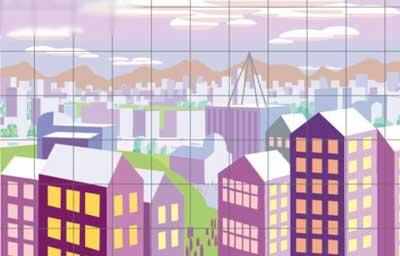Hyderabad's Banjara & Jubilee Hills witness shrinking spaces, haphazard growth
Urban planners put the blame of this unfortunate transformation squarely on previous government diktats that allowed developers to change the land use - from residential to commercial
 HYDERABAD: Bogged down by a slew of construction activity over the past few years, the once serene surroundings of Banjara Hills and Jubilee Hills have now turned into busy, congested urban centres. In place of sprawling bungalows and expansive green spaces stand rows of swank malls and top-end retail chains. At least half a dozen fresh commercial spaces are also seen rearing their heads in various parts of these neighbourhoods.
HYDERABAD: Bogged down by a slew of construction activity over the past few years, the once serene surroundings of Banjara Hills and Jubilee Hills have now turned into busy, congested urban centres. In place of sprawling bungalows and expansive green spaces stand rows of swank malls and top-end retail chains. At least half a dozen fresh commercial spaces are also seen rearing their heads in various parts of these neighbourhoods.The result: narrow roads, thickly polluted air and deadly traffic snarls.
Urban planners put the blame of this unfortunate transformation squarely on previous government diktats that allowed developers to change the land use - from residential to commercial - for a paltry fee.
Example: GO 766 issued in 2007 declared certain stretches in these areas as commercial so as to accommodate sprouting real estate projects. The only condition - owners/developers shall leave aside an additional 10 feet space for road widening or to provide streetside parking.
"Many stretches along Banjara Hills and Jubilee Hills were declared commercial due to real estate pressures. Urbanisation is a complicated issue and development projects have sprung up in a haphazard manner all over the city. All that a person has to do to set up a commercial establishment on a land parcel categorized as 'residential' is pay an impact fee," said K Srinivas Rao, additional chief city planner, Greater Hyderabad Municipal Corporation (GHMC).
The impact fee is an additional charge imposed on developers by the municipal administration to build notified commercial zones. It ranges between Rs 200 and Rs 400 per sq ft.
Not surprisingly, Road Nos. 1, 2, 3, 10, 12 and 14 in Banjara Hills - strictly earmarked for residential purposes - are now flooded with commercial ventures.
Ditto, Jubilee Hills where multiple roads, categorised as 'residential' zones in municipal records, are now a hub of glass-façade-sporting commercial structures. Take for instance: Road No 10 that's dotted with a popular school and several for-the-rich-only boutiques and parlours, among other commercial establishments. Also Road No 25 that's currently one of the most sought-after hubs for real estate projects.
Going by earlier records, only Road Nos. 92 and 36 should have been used for commercial purposes. "Although there are a few stretches that continue to exist as residential pockets, Jubilee Hills has lost its charm. A number of buildings of more than five floors have come up along Road No 76 that used to be a quiet residential stretch till about five years ago. That's because it has become very easy to obtain a No Objection Certificate from the Jubilee Hills Cooperative Society for such works," rued Srinivas Suryadevare, a resident of the area for more than 16 years.
Urban planning experts, predictably, aren't surprised by this "incremental" pattern of development that's resulted in "urban chaos".
"Transforming a residential area into a commercial one has many implications. Residential areas must be modified to ensure that they can handle the extra energy consumption, waste generation and vehicular load that come with gradual commercialization. The GHMC must also make sure that such commercial establishments don't alter the skyline of the area. Since this hasn't been done, the city is currently experiencing incremental development where the urban ecosystem has changed so much that nobody is aware of what is going on except the municipal administration. This will certainly result in urban chaos," said Anant Maringanti, director of Hyderabad Urban Labs.
Real estate developers, on the other hand, assert that a mixed land use pattern is ultimately beneficial for citizens. "It makes localities self-sufficient," argued C Shekar Reddy, former national president, Confederation of Real Estate Developers' Associations of India. "It also reduces traffic on the roads, as having all kinds of commercial establishments in their own localities ensures that people only have to travel short distances for specific purposes," he added.
Residents, however, have a different story to tell. "A city must evolve over time. However, Banjara Hills has transformed so much that for residents who have lived here for more than 10 years, the area is almost unrecognizable now. The skyline has been completely altered, roads have become narrower and traffic congestion is a nightmare," rued Kishan Rao, a 22-year-old resident of Banjara Hills. He appealed to the GHMC to stop allowing more commercial establishments from cropping up in residential areas.



COMMENTS
All Comments
By commenting, you agree to the Prohibited Content Policy
PostBy commenting, you agree to the Prohibited Content Policy
PostFind this Comment Offensive?
Choose your reason below and click on the submit button. This will alert our moderators to take actions